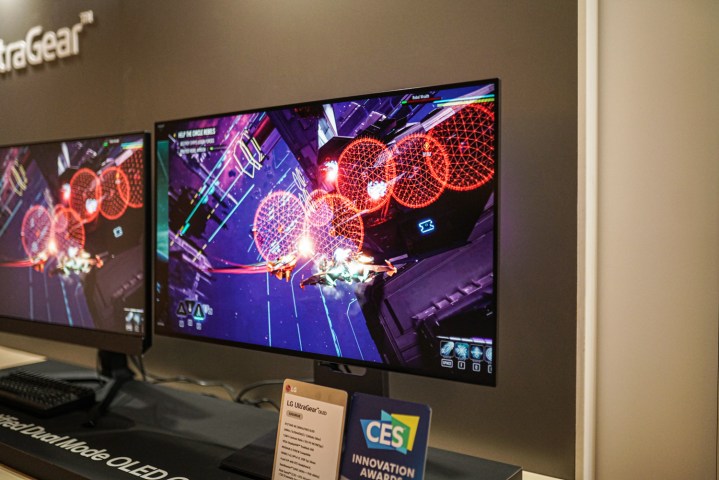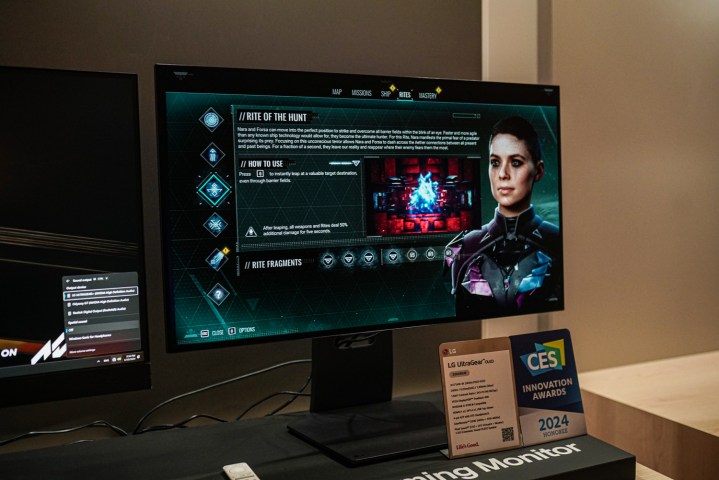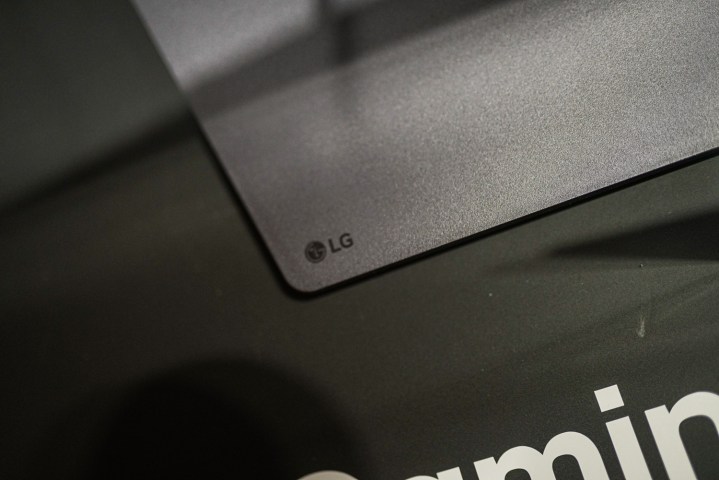
Gamers — myself included — have been begging for a 4K OLED gaming monitor for the past year and a half. And at CES 2024, we got exactly what we’ve been looking for. LG is pushing the 4K OLED gaming monitor further with its UltraGear 32GS95UE.
It’s a 4K OLED gaming monitor with a speedy refresh rate of 240Hz. The big change is LG’s dual refresh rate feature, which allows you to switch to 1080p at 480Hz with a single button. It delivers on a couple of counts — you get resolution when you want it, and refresh rate when you need it. And after playing with the display for a bit at CES, it’s clear how important that is.
First, the monitor itself. This is a WOLED panel from LG that uses Micro Lens Array (MLA) tech. Think the LG UltraGear OLED 27 we saw last year, just with boosted specs. You’re still getting the excellent contrast and HDR performance of OLED this year, but LG is pushing the brightness further. LG says this display can hit 1,300 nits of brightness.

It looks incredible. I can’t measure brightness on the CES floor, of course, but the display looked very bright, even in the brightly lit demo room I was in. That’s not to mention the size. At 4K and 32 inches, this is just about the perfect pixel density for high-resolution gaming.
The big deal is the dual refresh rate feature, however. Switching between the two modes is nearly instant, and you can either program the setting to a hotkey or to a joystick press. The option for 480Hz is great, though it’s a bit jarring.
At 32 inches, jumping all the way down to 1080p is noticeable. Your eyes can adjust, but the problem is that you’re going back and forth between 1080p and 4K. You have a point of comparison just a second before the monitor switches over, making the drop in resolution very noticeable.
What isn’t as noticeable is the refresh rate bump. Higher refresh rates are important for competitive gaming, but going from 240Hz to 480Hz doesn’t look as drastic as it sounds. As an OLED monitor, the UltraGear 32GS95UE already feels very responsive, and with a 240Hz refresh rate at 4K, the motion clarity is unmatched.

I appreciate having the option to go up to 480Hz, but I don’t see myself using that option much personally. I can still see how important it is, though. It’s there if you want to play competitive titles mainly, but it’s still nice to have the feature to fall back on even if it’s not the primary mode you’ll run the monitor in. It’s about flexibility.
Outside of the display itself, LG is sticking with its rather subdued UltraGear branding. It’s inoffensive, though I hoped for a little more out of LG. Compared to the Odyssey OLED G8 we saw from Samsung this year at CES, the UltraGear 32GS95UE feels a little too basic.
Design isn’t the only point that LG and Samsung are fighting on. Now that we have two 4K OLED displays with a 240Hz refresh rate, it’s a race to see which can deliver better image quality. LG is using MLA OLED while Samsung is sticking with QD-OLED. Brightness is going to be especially important here considering the bold claims LG is making.
That’s about all we know about the UltraGear 32GS95UE right now. LG hasn’t shared pricing and availability details yet, but with the growing list of OLED gaming monitors, it will need to come with a compelling price. The quality is certainly there based on early impressions, so hopefully LG can nail the value, too.
Editors’ Recommendations

